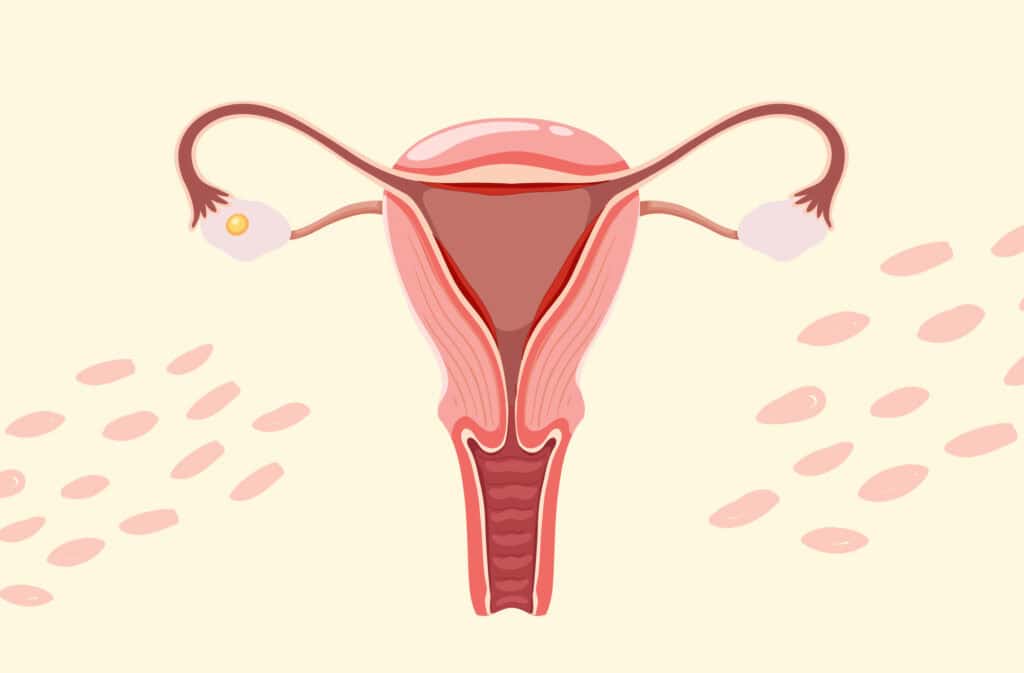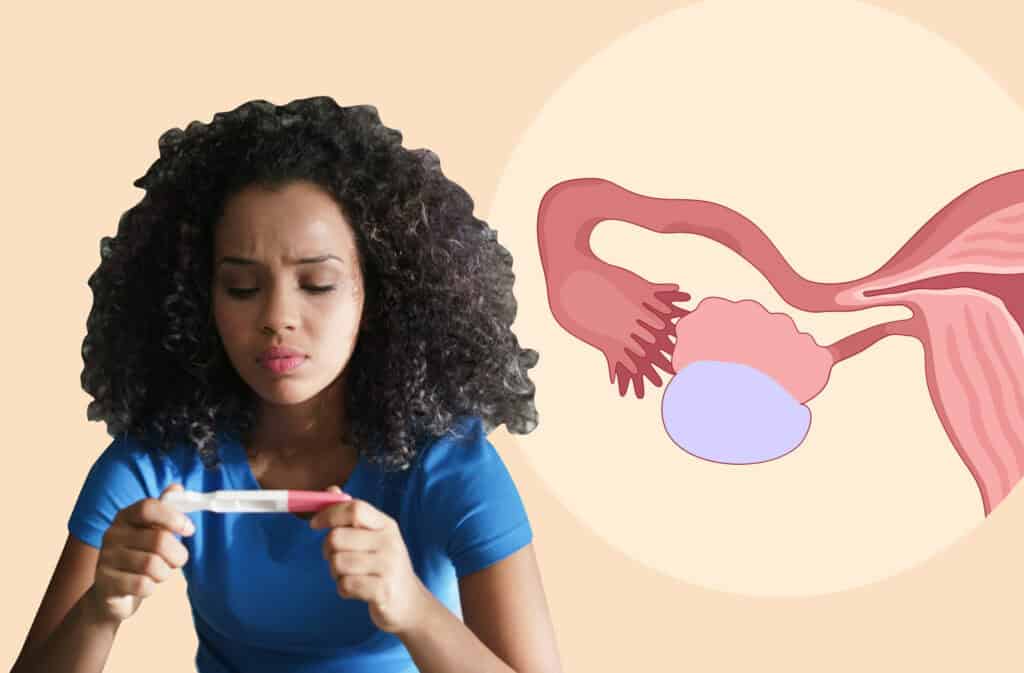Femia > Health Library > Your cycle > Sex > Female orgasm: Expert tips and techniques for ultimate pleasure
Female orgasm: Expert tips and techniques for ultimate pleasure

- Updated Feb 27, 2025
- Published
CRAFTED BY HUMAN
Crafted by human At Femia, we provide accurate and up-to-date information at every stage of your journey, from trying to conceive, pregnancy and postnatal support. All content is created by a real person based on in-depth research and own professional experience. Femia ensures that you will receive expert advice, strict accuracy and a personalized approach from our authors/medical experts. Learn more about our editorial policy.
FACT CHECKED
Fact checked At Femia Health, we maintain the highest standards of editorial excellence in delivering content focused on helping you conceive, guiding you through pregnancy, and supporting you postpartum. Explore our content review principles to learn how we ensure the accuracy and quality of our health and lifestyle tips for every stage of your journey.
A pleasurable female orgasm commonly requires a relaxed and comfortable environment, sufficient foreplay, stimulation of the pleasure points, and mental and physical relaxation. Proper and open communication with your partner about your desires during sex is necessary to ensure a successful orgasm for both males and females.The common types of woman orgasms include clitoral orgasm, anal orgasm, G-spot orgasm, blended orgasm, cervical orgasm, and nipple orgasm. Each occurs by stimulating the respective body organ.
Just like every human possesses a different nature and experiences pleasure from distinct activities, female orgasm is also a natural and complex phenomenon that can vary for every woman. For example, the desired sexual position to achieve a satisfying orgasm and its duration can be different for each woman.
Hence, to find out which sexual techniques and positions you find the most pleasurable, comfortable, and satisfying, it is crucial to understand your body by gradually experimenting and communicating your needs with your partner. This will help you achieve an enjoyable orgasm and sexual satisfaction. Let’s discuss the tips and techniques for attaining ultimate female orgasm and sexual pleasure.

Understanding the female orgasm
For both men and women, orgasm is defined as the peak of sexual excitement and pleasure that is felt in the genitals and throughout the body. It is typically accompanied by ejaculation, lasts for a few seconds, and makes the person feel satisfied and aroused. It increases a person’s heart rate, blood pressure, respiratory rate, and body temperature.
When a woman is sexually aroused and about to reach sexual climax (orgasm), blood flow to the genitals increases, and the genital muscles rapidly contract, which causes the vulva to swell and fluid to be released from the vaginal walls. At the same time, the brain releases a surge of oxytocin and dopamine, which gives intense feelings of pleasure.
Understanding the male orgasm
A man’s sexual arousal and orgasm is commonly triggered by stimulation of the penis, brain, or sometimes from other erogenous zones, like scrotum, anus, perineum, nipples, inner thighs, or other sensitive areas of the body.
Like females, sexual arousal in men increases blood flow to the genitals. The increased blood flow causes penile erection and raises their heart rate, blood pressure, and respiratory rate.
The erection of the penis is followed by rhythmic contractions of the pelvic muscles and release of seminal fluid from the urethra.
Differences between female and male orgasm
Some of the key differences between men’s and women’s orgasm include:
| Sexual Factors | Woman Orgasm | Man Orgasm |
|---|---|---|
| Triggered by | Vaginal, clitoral, or nipple stimulation. | Mostly by penile stimulation. |
| Duration | Longer than male. On average, female orgasm lasts between 13 to 51 seconds. | A male orgasm is shorter than a female’s. It lasts between 10 and 30 seconds. |
| Intensity | Female orgasms are more subtle than men. | Male orgasms are often more intense. |
| Hormonal response | The release of oxytocin in women is more pronounced than in men. | Oxytocin is released but in lesser amounts. |
| Refractory period | Women typically need a shorter refractory (recovery) period after sex than men. | Men typically require a longer refractory period, ranging from a few minutes to several hours or days. |
Do women cum? Exploring myths and facts
So, do women cum like men? Yes, most females release a thick, milky, white or grey fluid before and during orgasm (also known as squirting), but men ejaculate larger volumes of fluid than females.
As a woman reaches sexual climax, blood flow to the genitals increases, the vagina becomes wet, and the fluid may also be ejaculated.
However, the color, consistency, and amount of fluid released by the vagina during orgasm may differ for each woman. Some females may not notice that they released any vaginal fluid during orgasm, as the amount may be small.
👉Find out more: Understanding female libido: Signs of a high sex drive in women
Types of female orgasms
There are many types of female orgasm. Each type can vary in sensation and intensity of pleasure. Some of the most common types include:
1. Clitoral orgasm
The clitoris is the primary female sexual organ, and clitoral orgasm is the most common type of female orgasm.
The clitoris is a small, erect tissue located above the vaginal opening and urethra. Stimulating the clitoris with fingers, sex toys, or penis can cause clitoral orgasm. It produces intense and localized sensations.
2. G-spot orgasm
The G-spot is another sensitive sexual point that is located about two to three inches inside the front vaginal wall.
G-spot orgasm generally results from stimulating the clitoris, anterior vaginal wall, and urethra, as the G-spot is interconnected with these areas. It causes deep, intense pleasure.
3. Blended orgasm
Blended orgasm is a combination orgasm that occurs from stimulating multiple sexual areas of the body together, like the G-spot and the clitoris.
4. Anal orgasm
The anus is another strong erogenous zone, and stimulating the anus or having penetrative anal sex can lead to anal orgasm. It creates deep and internal sensations.
5. Nipple orgasm
Nipple orgasm occurs from stimulating the female’s breasts and nipples. It produces pleasurable feelings throughout the body and nipples.
6. Cervical orgasm
A cervical orgasm happens when the cervix is stimulated or touched during deep penetration by sex toys, penis, or dildo. Cervical orgasm causes deep and internal feelings of pleasure.
7. Sleep orgasm
Sleep orgasm, also known as nocturnal orgasm, is a type of orgasm experienced during sleep, commonly due to wet dreams, psychological factors, or thoughts of sex or fantasies before sleeping.
How to have an orgasm: Tips for women
So, how to orgasm? If you are facing difficulties achieving orgasm, don’t worry. Here is a guide to help you:
1. Know your body
Everyone’s body, likes, and dislikes are different, so they may experience pleasure from distinct things. For example, some women experience pleasure when their partner moans during sex or plays with their breasts and nipples, while some may find pleasure in kissing or during oral sex, and so on.
So, the first step is to know your body and brain, and figure out the most pleasurable thing for you in sex and what is needed to activate or kickstart your sexual mood.
2. Explore your erogenous zones
The next step is to explore your entire body, including your erogenous zones, by stimulating them with your partner or through masturbation.
Areas to explore can include your nipples, breasts, clitoris, vagina, between the legs, lips, mouth, neck, face, or others. Your clitoris and G-spot are major sexual points, so explore them through various techniques. For example, by stimulating them through fingers, sex toys, or your partner’s penis.
Exploring your erogenous zones and other parts of the body will help you discover your unique sexual pleasure points.
3. Communicate with your partner
When exploring the pleasure points of your body and the things that activate your sexual mood, it is important to communicate with your partner about your needs. Try having a conversation when your partner is in a good mood and willing to actively listen to you.
👉Find out more: Does period sex make you more attached? Exploring the emotional and spiritual aspects
How to give a woman an orgasm: Tips for partners
How to make a woman orgasm is a question most men want to figure out. In this section, we will discuss some important techniques and advice for male partners on how to make a female orgasm and enhance a woman’s orgasmic experience.
1. Prioritize foreplay
It is crucial for men to understand that women require an adequate sexual foreplay period to become lubricated, which helps ease penetrative sex for both partners.
Foreplay sexually arouses a woman, prepares her vagina and body for penetrative sex, and helps her achieve orgasm. Foreplay can involve hugging, cuddling, kissing and licking, or touching and massaging a woman’s body.
Hence, if you want a woman to achieve orgasm, it is crucial to give a considerable amount of time to foreplay before you engage in penetrative, vaginal, or anal sex.
2. Communicate with your partner about things they enjoy
Shyness and hesitation can often lead to awkward situations as you and your partner explore each other’s likes and dislikes during sex. So, it is essential to engage in an open and proper conversation with your partner about things they do or do not enjoy. Next time you have sex, make sure to remember and include things your partner said they like.
3. Create a comfortable and relaxed environment
To achieve orgasm and have an enjoyable and satisfying sexual experience, your partner must be mentally relaxed and comfortable.
So, before having sex, create a comfortable and cozy environment. Try adding fragrance to the room, lighting some candles, and having romantic talks with your partner to fully relax their body and mind.
How to make a woman orgasm: What to avoid
Here are some female orgasm tips about things to avoid while having sex:
- Not giving enough time to foreplay.
- A lack of communication before and during sex.
- Not understanding or focusing on female pleasure points, particularly the clitoris.
- Giving performance pressure to your partner or creating a stressful or anxious environment.
- Having distractions or interruptions during sex.
Orgasm tips: Enhancing the experience
There are various techniques and exercises to enhance your orgasmic experience and bring a more intense release, including:
1. Pelvic floor massage and exercises
Engaging in pelvic floor exercises for a few minutes daily can help improve your sexual life, enhance your orgasmic experience, improve lubrication and vaginal elasticity, and offer better grip and control during sex.
Pelvic floor massages or exercises that strengthen or tone your pelvic floor, like kegels, can enhance muscle control, increase sensitivity, and improve blood flow in the genital region.
Reverse Kegels are another exercise both men and women can do that relaxes and strengthens the pelvic floor muscles, which helps enhance sexual health.
2. Incorporating toys
Incorporating toys during sex, like using vibrators, massagers, or wands, can give you additional stimulation and arousal and help you achieve a more satisfying, intense orgasm.
3. Edging
Edging is a technique to increase the duration and intensity of your sexual activity. It allows you to experience pleasure or climax multiple times during sex.
The technique involves stopping or reducing the intensity of sexual stimulation right before orgasm, giving a slight delay, starting to increase the intensity of stimulation again and repeating such cycles as many times as you like.
4. Breathing exercises
Another way to enhance your orgasm experience is to engage in deep breathing exercises before you start having sex.
Slowly exhale air from your nose, hold for a few seconds, and gradually release the air from your mouth. This will relax your body and mind, relieve tension, increase oxygen-rich blood flow to the genitals, and reduce performance pressure.
Exploring different ways to achieve orgasm
Your entire body and mind are involved in having sex and experiencing pleasure. This means there are multiple ways to achieve orgasm, but it requires experimenting with your body and discovering what works best for you.
Some common ways to achieve orgasm that you can try include:
- Try different sex positions, and identify which one you enjoy the most.
- Use enough lubrication on your body, especially on your genitals, to have smooth intercourse and achieve an intense and deep orgasm.
- Make moaning sounds while having sex.
👉Find out more: Does ovulation make you horny? Understanding the link between ovulation and libido
Myths and facts about women's orgasm and ejaculation
Here are some of the common myths about women’s orgasm and the facts:
1. Myth: All orgasm involves ejaculation
One of the myths regarding female orgasm is that all orgasms involve ejaculation, which is not valid.
Fact:
Orgasm can occur with or without ejaculation, and the amount of fluid released from the vagina can vary greatly in each woman and even be unnoticeable.
An orgasm is the peak of sexual pleasure, while ejaculation is the release of fluid from the urethra. Ejaculation typically happens right after orgasm, but it’s not necessary to experience ejaculation after or before orgasm every time you have sex.
2. Myth: Your partner can tell if you had an orgasm
Fact:
Your partner or any other person cannot tell if you had an orgasm. It’s a pleasurable feeling that you can sense throughout your body when you reach sexual climax.
3. Myth: An orgasm is needed to get pregnant
Many people believe that a woman must orgasm to get pregnant, which is a myth.
Fact:
Pregnancy entirely depends on whether your partner ejaculates inside your vagina, and a healthy sperm reaches your egg and is fertilized. So, a male must have an orgasm for a woman to get pregnant, but for women it is not necessary.
4. Myth: Something is wrong with a woman if she can’t have an orgasm
Fact:
An inability to achieve orgasm depends on multiple factors, including mental state, side effects of any medications, comfort level or relationship with the partner, and others.
So, if a woman is unable to have an orgasm, it doesn’t mean something is wrong with her. She might just be mentally stressed, or other factors may be the possible cause.
5. Myth: There is only one type of body orgasm
Some people think that orgasm in women can only be achieved by stimulating the clitoris.
Fact:
There are many other areas in the body whose stimulation can result in orgasm, including the vagina, G-spot, nipples, and anus.

Questions from the Femia community
Why can’t I have an orgasm every time?
It's absolutely normal for orgasms not to occur sometimes. Multiple factors can affect your ability to achieve sexual climax, including mental or physical stress, distractions during sex, or a lack of stimulation of your sexual points. Try avoiding such factors to improve your sexual experience.
Is it possible for me to have multiple orgasms?
Yes, it's possible for you to have multiple orgasms, but it depends on how aroused and satisfied you are during sex. A considerable time given to foreplay and sufficient stimulation of your sexual points can help you achieve multiple orgasms. If you wish to have multiple orgasms, it is crucial to explore and understand your body's main pleasure points and the things you enjoy most during sex.
Does every woman experience orgasm the same way?
No, every woman's orgasm experience can vary depending on the sensation, intensity, and duration of sex. Moreover, every woman's pleasure points may be different. Some may enjoy clitoral stimulation the most, while others may need vaginal or anal stimulation for orgasm.
How can I tell if I’m close to having an orgasm?
The time when your sexual pleasure is at its peak is often the main indication that you are close to having an orgasm. Other signs, like a fast heartbeat, increased body temperature, muscle tension, and buildup of pleasure in your entire body also indicate that you are approaching orgasm.
The bottom line
Female orgasm is a complex and natural process that varies in each woman, as every person’s sexual pleasure points can be different based on their preferences and likes.
So, it’s important for a woman to explore her body and communicate openly with her partners about her preferences to enhance her orgasmic experience and sexual life.
Remember that every female’s body is different, and achieving orgasm is a journey, so you may require experimenting with various techniques and methods to find out what works best for you.
References
- Cleveland Clinic. “Orgasm.” Cleveland Clinic, 1 May 2024, my.clevelandclinic.org/health/articles/22969-orgasm.
- Cleveland Clinic. “For Women Who Can’t Orgasm: You’re Not Alone (and There Is Hope).” Cleveland Clinic, 12 Aug. 2024, health.clevelandclinic.org/theres-help-for-women-who-cant-achieve-orgasm.
- Maister, Lara, et al. “The Erogenous Mirror: Intersubjective and Multisensory Maps of Sexual Arousal in Men and Women.” Archives of Sexual Behavior, vol. 49, no. 8, June 2020, pp. 2919–33. https://doi.org/10.1007/s10508-020-01756-1.

Learn about the follicular phase, its symptoms, and how to optimize your diet for better health. Discover key foods, hormonal changes, and tips for improved fertility and wellness.

Let’s learn what ovarian cysts are and how they affect fertility. Ovarian cyst types, treatment options, and fertility impact.

Look out for these danger signs of pregnancy during your second trimester which require immediate medical attention.

